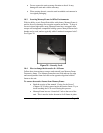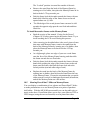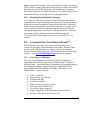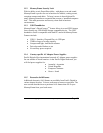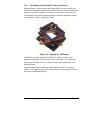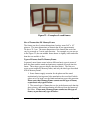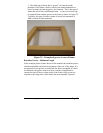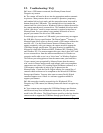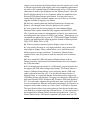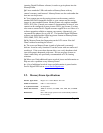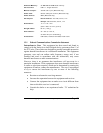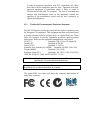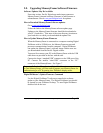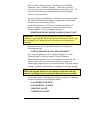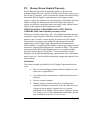
Copyright© 2002-2003 Pacific Digital Corporation Page 55
camera is not recognized by MemoryFrame, then the camera won’t work
in DirectConnect mode, and instead, such a non-compliant camera must
use either a PC (running Digital PixMaster software) or a USB memory-
card-reader in order to get its photos into the MemoryFrame. Check the
Pacific Digital website for a list of cameras which are compliant to the
Microsoft USB Mass Storage specification. You may also want to
contact Pacific Digital customer support at to see if there is a software
upgrade available to support your camera.
Q: With my camera connected, MemoryFrame doesn’t display any
pictures, even though I know there are pictures in the camera.
A: Your camera may be storing images in a non-standard format.
MemoryFrame camera connection only supports standard JPEG (.JPG)
files. Consult your camera’s documentation to learn if your camera can
be configured to store pictures in JPEG (.jpg) format. Alternatively, you
can transfer the photos first to your PC. The bundled Digital PixMaster
software can download the following picture formats to MemoryFrame:
JPEG, TIFF, BMP, PNG, or GIF.
Q: With my camera connected, picture display seems to be slow.
A: Your picture files may be very high-resolution. Large picture files
take longer to display. Many cameras allow you to choose between
different picture storage resolutions. To maximize MemoryFrame
responsiveness, take your pictures with the camera a lower resolution
setting.
Q: I have attached a USB card reader to MemoryFrame with my
camera’s memory-card inserted, but MemoryFrame does not recognize
the USB card-reader.
A: Even though your card-reader is a USB model, your card-reader may
not support the USB Mass Storage specification. The DirectConnect
TM
feature of MemoryFrame allows a user to directly attach a USB card-
reader without the need for a PC. For this DirectConnect feature of
MemoryFrame, it is specified that the card-reader needs to support the
USB Mass Storage specification. This spec (co-authored by Microsoft) is
built into Windows 98SE, Windows ME, Windows 2000, and Windows
XP. If a card-reader supports this specification, then it does NOT need
its own custom driver from the card-reader manufacturer for Windows to
recognize and be able to utilize as a “drive letter” in Windows Explorer.
This specification allows you to drag pictures from the card-reader onto
your hard-drive without requiring a custom Driver. If your card-reader is
not recognized by MemoryFrame, then the card-reader won’t work in
DirectConnect mode. Such a non-compliant card-reader must use a PC



